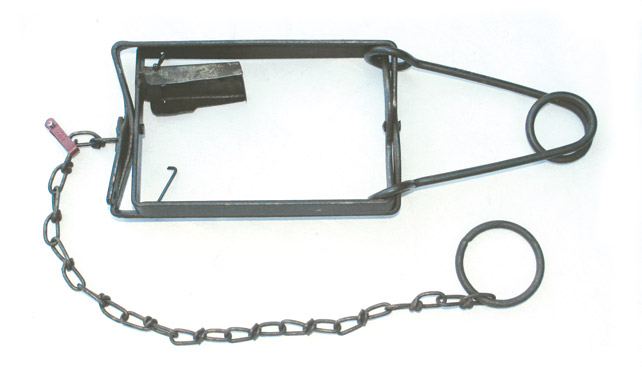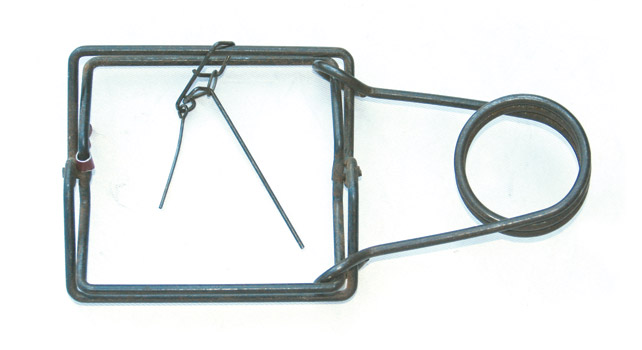 Antique Traps: Frank Conibear
Antique Traps: Frank Conibear 
By Tom Parr

Trappers who remember the advent of the Conibear in the 1950s speak of how quickly the bodygrip changed trapping. But the trap was far from an overnight sensation. In fact, it took Frank Conibear nearly 30 years to develop a working model, one that other trappers would embrace.
Collector value for that first rare model is around $500 and later versions go for anywhere from $200 to $400 apiece.
Conibear was born in 1896, in Plymouth, England. His family moved to Canada three years later, settling in Ontario. When Frank was 15, the family moved on to Fort Resolution at Great Slave Lake in the Northwest Territories, and Frank started trapping white fox in the Barren Lands. He continued trapping for a living as an adult.
In the spring of 1929, he took an idea for a new type of trap to Edmonton, Alberta, where he paid a mechanic to make prototypes from tempered steel. The trap had 1/2-inch-wide flat metal scissor jaws and was powered by a 6-inch wire spring. The frame was 7 inches tall and 4 inches wide. There was a pan on the bottom of the frame, where an animal stepped to fire the trap.
Frank tried the traps on his own line, but he was disappointed with the results. Neither the spring nor the firing system worked very well, and he didn’t have the money to try again.
Then, Miss Clara Van Steenwyck, an animal welfare activist who knew nothing about trapping but was keenly interested in finding a substitute for the leghold trap, heard about Frank and decided to back his next attempt. She provided money for a patent and also to have more prototypes built. But these traps, too, failed the field test, and for the next 18 years, only a spark of the idea remained with Frank.
In 1944, Frank stopped trapping for a living and moved to Victoria to work as a carpenter. About that same time, a group in Vancouver formed the Association for the Protection of Furbearing Animals. Miss Van Steenwyck was vice president, and she apparently had kept in contact with Frank throughout the years. She and another member of the group, Miss Nona Webster, were very supportive of Frank. He started tinkering with his trap ideas again.
In 1953, the group funded a new Conibear trap, and a trapper by the name of Eric Collier tested it in the Chilcotin region of British Columbia. These traps were not so good, either. But with Eric’s input, Frank reworked the trap, and by March 1955, he had developed a very functional design. A few of these traps are in the hands of collectors.
This trap was much like the Conibear of today, except the trigger mechanism was comprised of four intricate working parts: a base, a wire circle that held the trigger, a single trigger, and finally a pull wire to aid in positioning the trigger. This pull wire apparently got in the way more than it helped, because many trappers cut it off. The assembly was delicate and difficult to set compared to the simple trigger on the Conibear trap of today. Also, the pivot point of the jaws was made with a hole and pin (for lack of better terms) and not riveted as are today’s traps.
There were other bodygrips before the Conibear, but this was the one that caught on big. During the early 1970s, annual production of the 110 Conibear passed one million, a peak reached by only two other traps: the No. 1 Victor and the Gibbs Two Trigger. In 1958, Conibear sold the rights to the trap to the Animal Trap Company of America, Lititz, Pennsylvania. The current manufacturer is Conibear traps is Oneida Victor, Inc., Ltd. of Euclid, Ohio.

* * *
For information on this and other collectible antique traps, contact: Tom Parr, the North American Trap Collectors Association, P.O. Box 94, Galloway, OH 43119; (614) 878-6011.